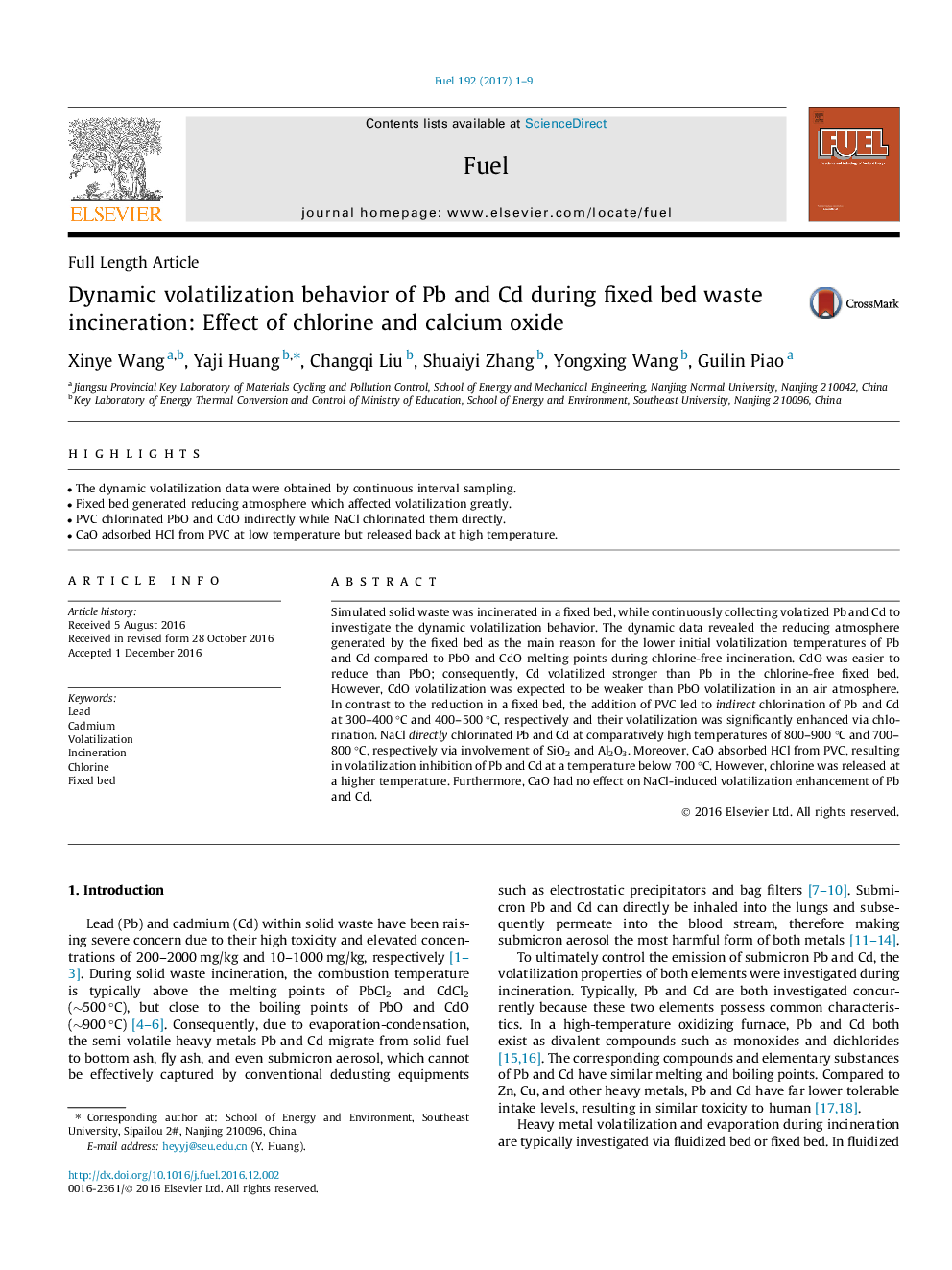| Article ID | Journal | Published Year | Pages | File Type |
|---|---|---|---|---|
| 4768718 | Fuel | 2017 | 9 Pages |
Abstract
Simulated solid waste was incinerated in a fixed bed, while continuously collecting volatized Pb and Cd to investigate the dynamic volatilization behavior. The dynamic data revealed the reducing atmosphere generated by the fixed bed as the main reason for the lower initial volatilization temperatures of Pb and Cd compared to PbO and CdO melting points during chlorine-free incineration. CdO was easier to reduce than PbO; consequently, Cd volatilized stronger than Pb in the chlorine-free fixed bed. However, CdO volatilization was expected to be weaker than PbO volatilization in an air atmosphere. In contrast to the reduction in a fixed bed, the addition of PVC led to indirect chlorination of Pb and Cd at 300-400 °C and 400-500 °C, respectively and their volatilization was significantly enhanced via chlorination. NaCl directly chlorinated Pb and Cd at comparatively high temperatures of 800-900 °C and 700-800 °C, respectively via involvement of SiO2 and Al2O3. Moreover, CaO absorbed HCl from PVC, resulting in volatilization inhibition of Pb and Cd at a temperature below 700 °C. However, chlorine was released at a higher temperature. Furthermore, CaO had no effect on NaCl-induced volatilization enhancement of Pb and Cd.
Related Topics
Physical Sciences and Engineering
Chemical Engineering
Chemical Engineering (General)
Authors
Xinye Wang, Yaji Huang, Changqi Liu, Shuaiyi Zhang, Yongxing Wang, Guilin Piao,
